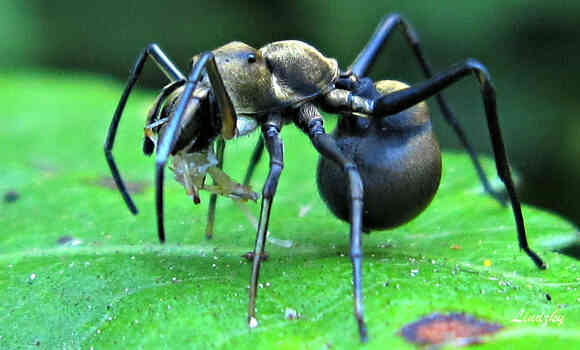Humankind has not only created its own civilization — insects such as ants also coped with this task. Strict hierarchy, territorial claims, distribution of duties — isn’t that civilization? These little hard workers are able to work tirelessly all day long, striving for the common good and following the program laid down in nature.
Interesting facts about ants
- Ants are social insects that have males, females, and workers in their colonies. The first two castes have wings, and only the last do without them. At the same time, the dominant position in the anthill is occupied by working insects – these are females with an underdeveloped reproductive system.
- Some species of these insects have well-developed stings.
- Ants live on the entire surface of the Earth except for Antarctica and a few outlying islands (interesting facts about Antarctica).
- Ants make up 10-25% of the total number of land animals that inhabit our planet.
- If you combine ants with termites, they will make up a third of the terrestrial inhabitants of the Amazonian forests. In sum, Amazonian ants and termites weigh only 2 times less than the rest of the fauna of this area (interesting facts about the Amazon River).
- Scientists know more than 14,000 species of ants that live in different parts of the globe.
- There is a separate science that studies ants – myrmecology.
- Ants are the most advanced insects of the Earth in terms of evolution.
- Some species of ants communicate with each other using a special “language” that allows insects to collectively perform complex multi-stage tasks.
- In the African Côte d’Ivoire, almost 2 billion ants live on a square kilometer of the savanna, forming about 740 thousand colonies.
- Adult ants range in size from 1 mm to 5 cm.
- Researchers believe that ants evolved from some type of wasp around 130 million years ago, during the Cretaceous period.
- Termites, often confused with ants, are actually not even ant relatives – they have more similarities with cockroaches and mantises (interesting facts about praying mantises)
- In 1931, a unique species of ant was discovered in Australia, which appeared in ancient times and has survived to this day almost unchanged – it was called the “dinosaur ant”. Representatives of this species, despite many expeditions, were only rediscovered 45 years later.
- Ants have not only compound eyes made of many small lenses, like other insects, but also 3 ordinary eyes that help insects determine the level of light (interesting facts about eyes).
- Ants transmit signals to each other and communicate by touching their antennae on their heads.
- The mandibles of some ants swing open 270 degrees and then close like the doors of a trap.
- Ants easily crawl along vertical surfaces thanks to hooked claws at the end of each foot.
- The larvae of some ants secrete a silk-like substance to create protective cocoons.
- The female ant mates only once, during the so-called “nuptial flight”, and then expends the accumulated sperm male throughout life. Males die shortly after mating.
- Ant queens are record holders for longest life among insects. These females live an average of 12-20 years, although such a queen once lived for 28 years in laboratory conditions.
